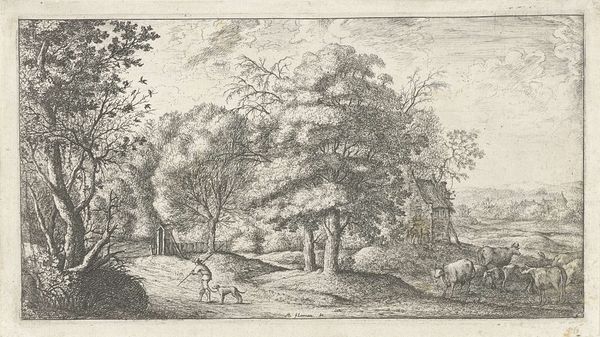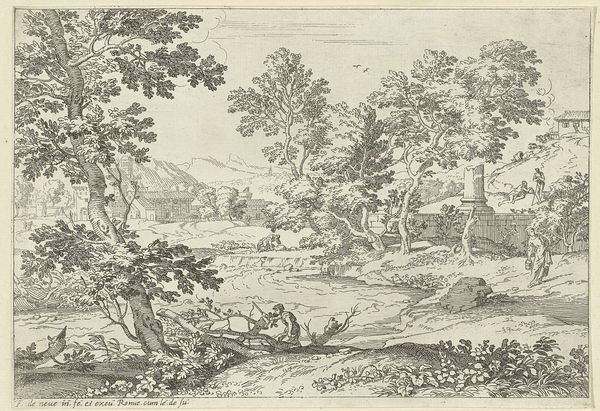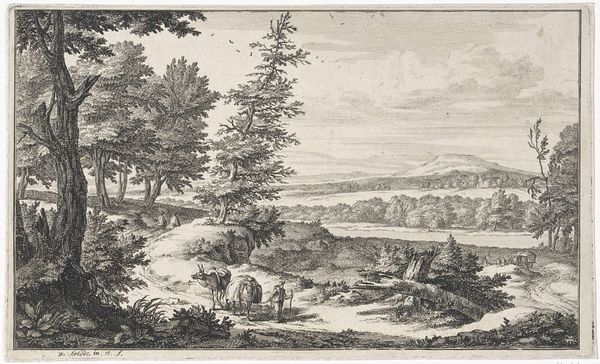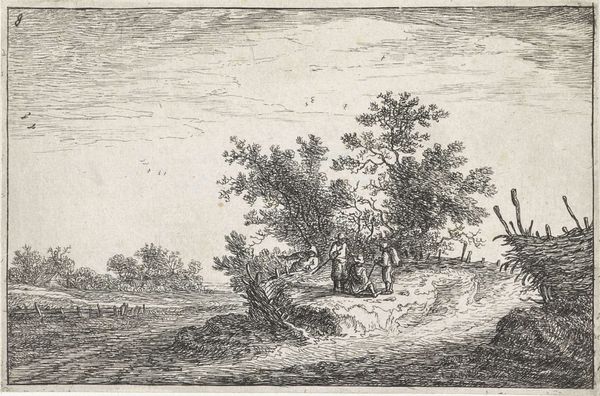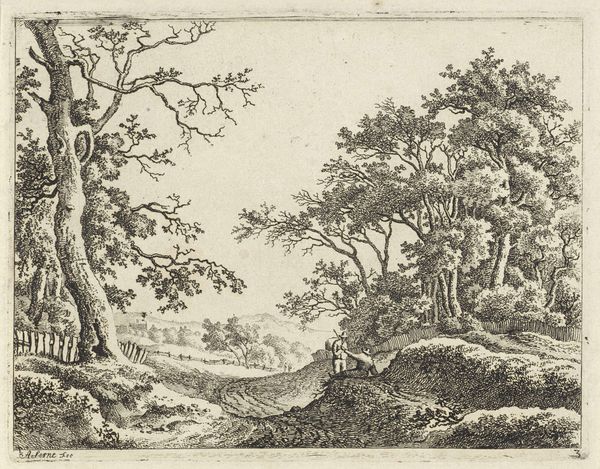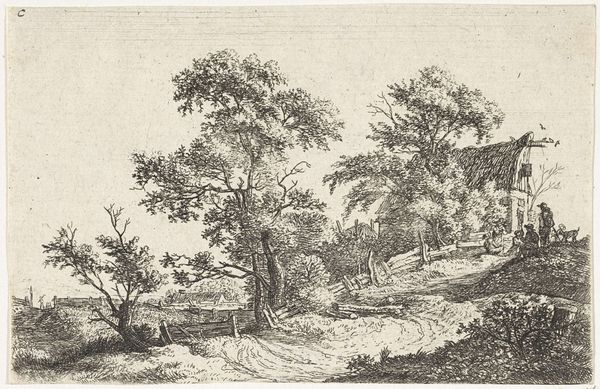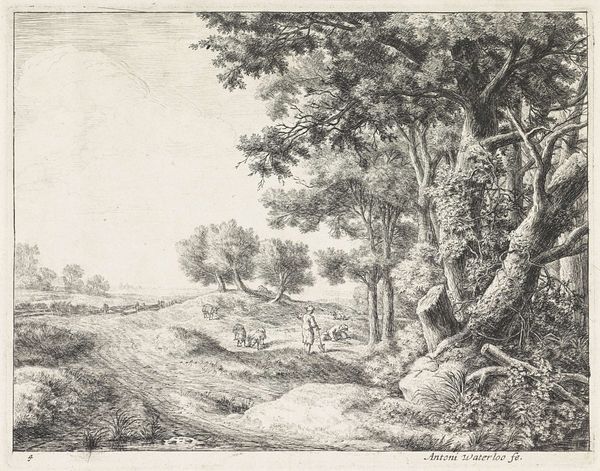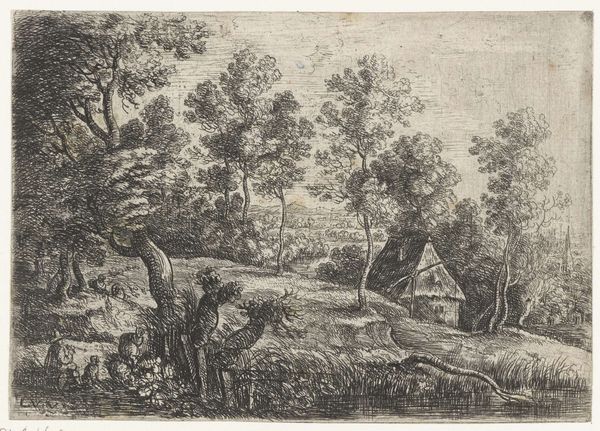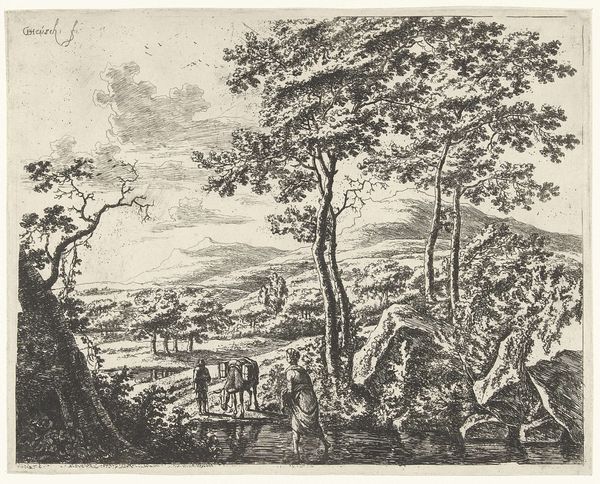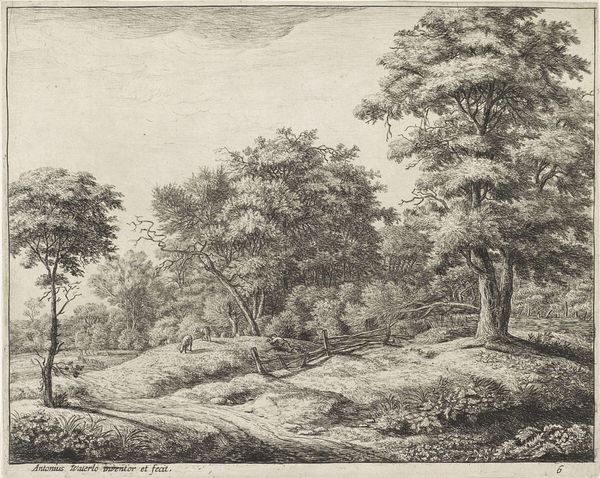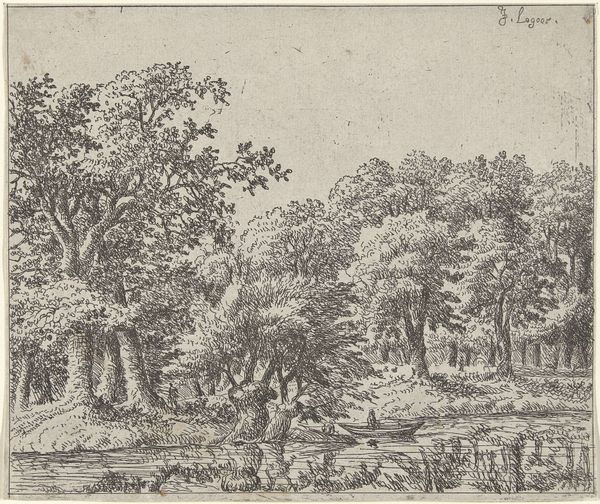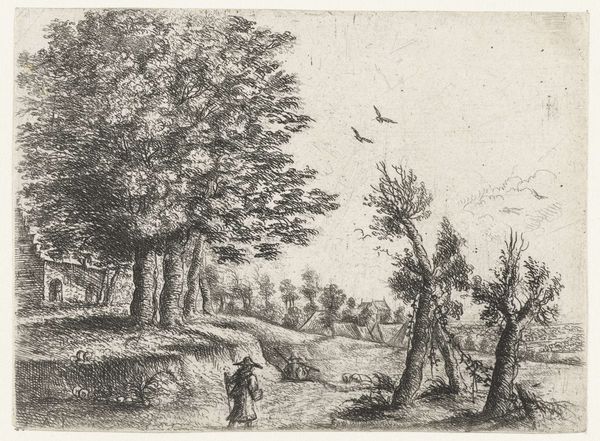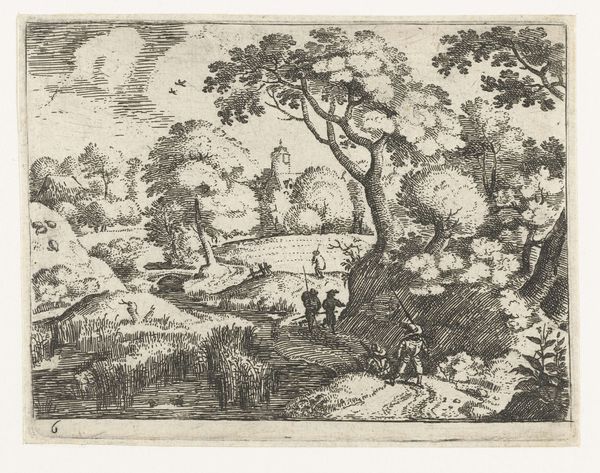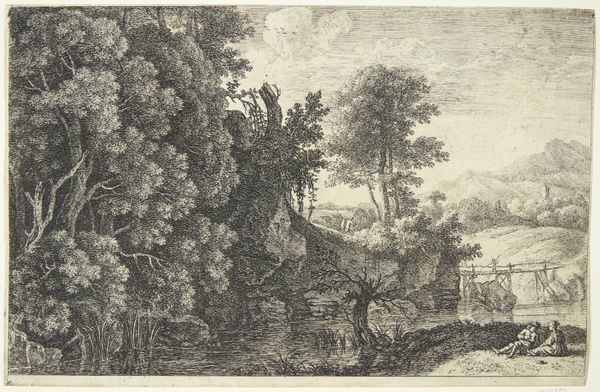
drawing, etching
#
drawing
#
dutch-golden-age
#
etching
#
landscape
Dimensions: height 115 mm, width 215 mm
Copyright: Rijks Museum: Open Domain
Editor: Here we have "Pad langs het bos," or "Path along the Woods," an etching by Albert Flamen, made sometime between 1648 and 1672. The dense, detailed lines create a compelling forest scene. What stands out to you when you look at this work? Curator: This print exemplifies the Dutch Golden Age's fascination with the local landscape, but it's important to consider the market for these images. Were these intended for domestic display, reinforcing ideas of national identity, or were they also circulated abroad? Did they perhaps serve a pedagogical function, training aspiring artists in landscape depiction? Editor: That’s a great point, it’s easy to overlook the broader societal role that art plays. It definitely wasn't just created in a vacuum. Curator: Exactly. Notice, too, the subtle inclusion of livestock and figures. How do these elements function within the overall composition and reception of this etching? Are they merely aesthetic, or do they speak to a relationship between the Dutch and their land, suggesting ideas of productivity or even ownership? Editor: They seem like more than just pretty additions. The livestock definitely imply something about how people used the land. I hadn't thought about it that way before. Curator: Right. So, thinking about Flamen’s prints within the broader social and economic context helps to unpack their seemingly simple depictions of nature. It goes beyond the aesthetic appreciation to understand the social meaning embedded in landscape imagery. Editor: I see how considering the cultural background provides such a deeper understanding. Thanks! Curator: My pleasure. Hopefully, it offered a broader view of this kind of artwork and its creation process.
Comments
No comments
Be the first to comment and join the conversation on the ultimate creative platform.
